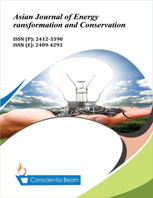Modeling and Optimization of Phenylacetyylcarbinol Synthesis via Benzaldehyde: A Case of Artificial Neural Network vs. Response Surface Methodology
DOI:
https://doi.org/10.18488/journal.81/2014.1.2/81.2.56.75Abstract
In this study, a comparative optimization of biotransformation of benzaldehyde to L-Phenylacetylcarbinol via free cells of Saccharomyces cerevisae using Response Surface Methodology (RSM) and Artificial Neural Network (ANN) was done. A polynomial regression model was developed and RSM optimum process was determined. In developing ANN model, performance of ANN is heavily influenced by its network structure, five-level-five-factors design was applied, which generated 50 experimental runs from CCD design of RSM. The inputs for the ANN were cell mass (wet. wt), incubation duration (min), concentration of acetaldehyde (mg/100 ml), concentration of benzaldehyde (mg/100 ml), and β-cyclodextrin level (%): X5. The learning algorithms used was QP with MNFF and the transfer function was Tanh. The RMSE, R2, AAD and predicted values were used to compare the performance of the RSM and ANN models. The extrapolative fitness of ANN model was found to be higher than RSM extrapolative fitness model. Thus, it can be concluded that even though RSM is mostly used method for experimental optimization, the ANN methodology present a better alternative.

